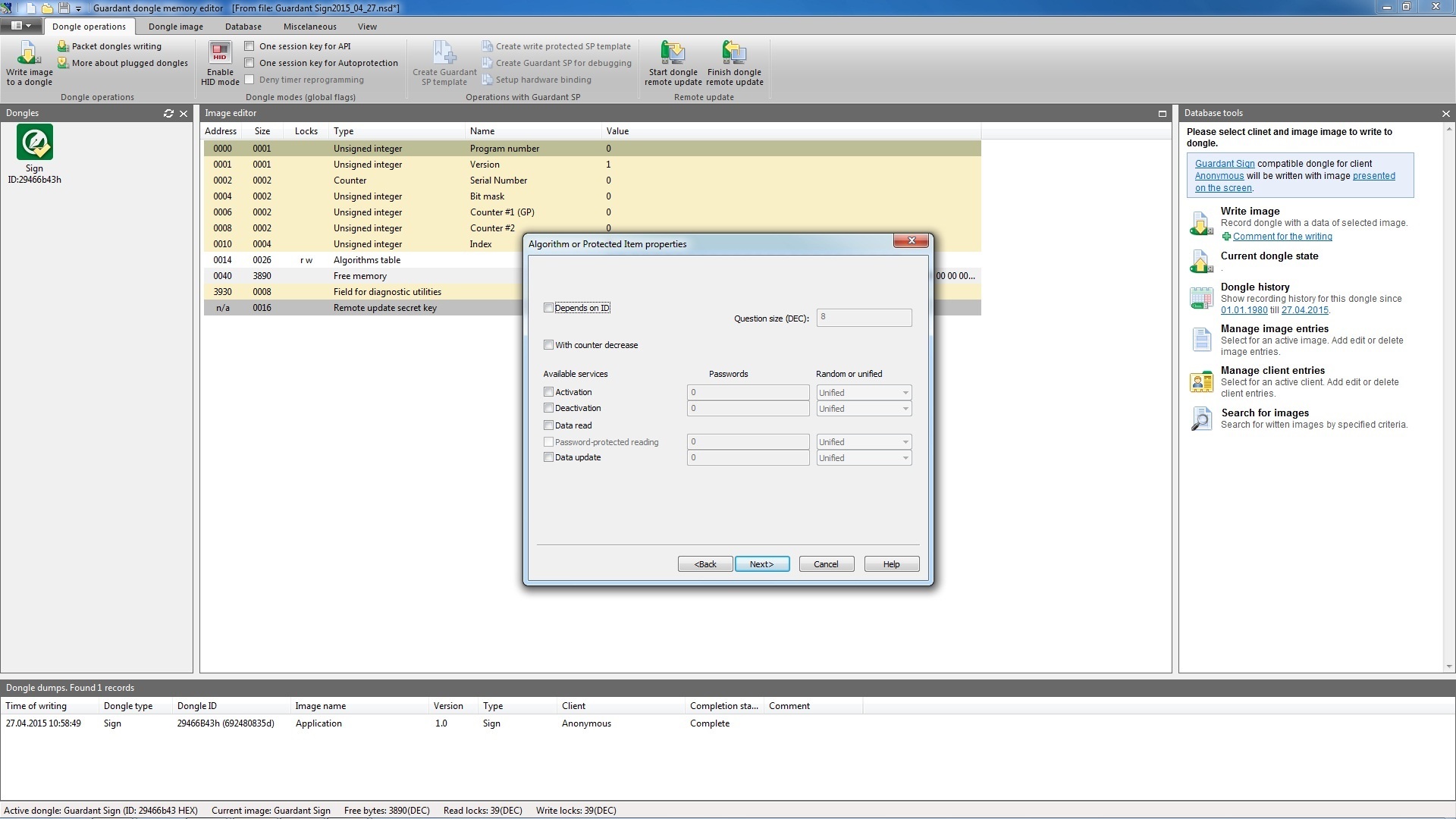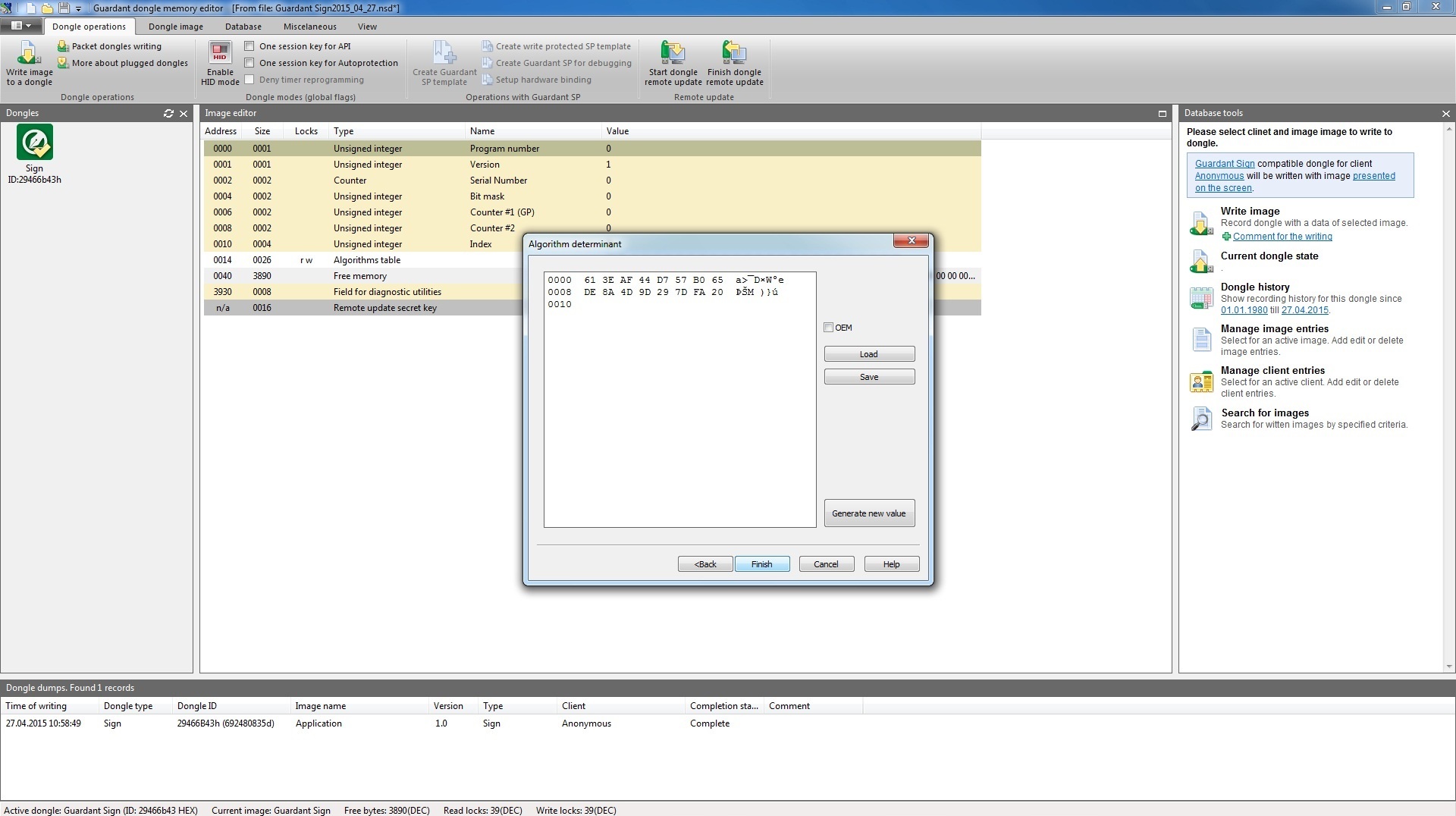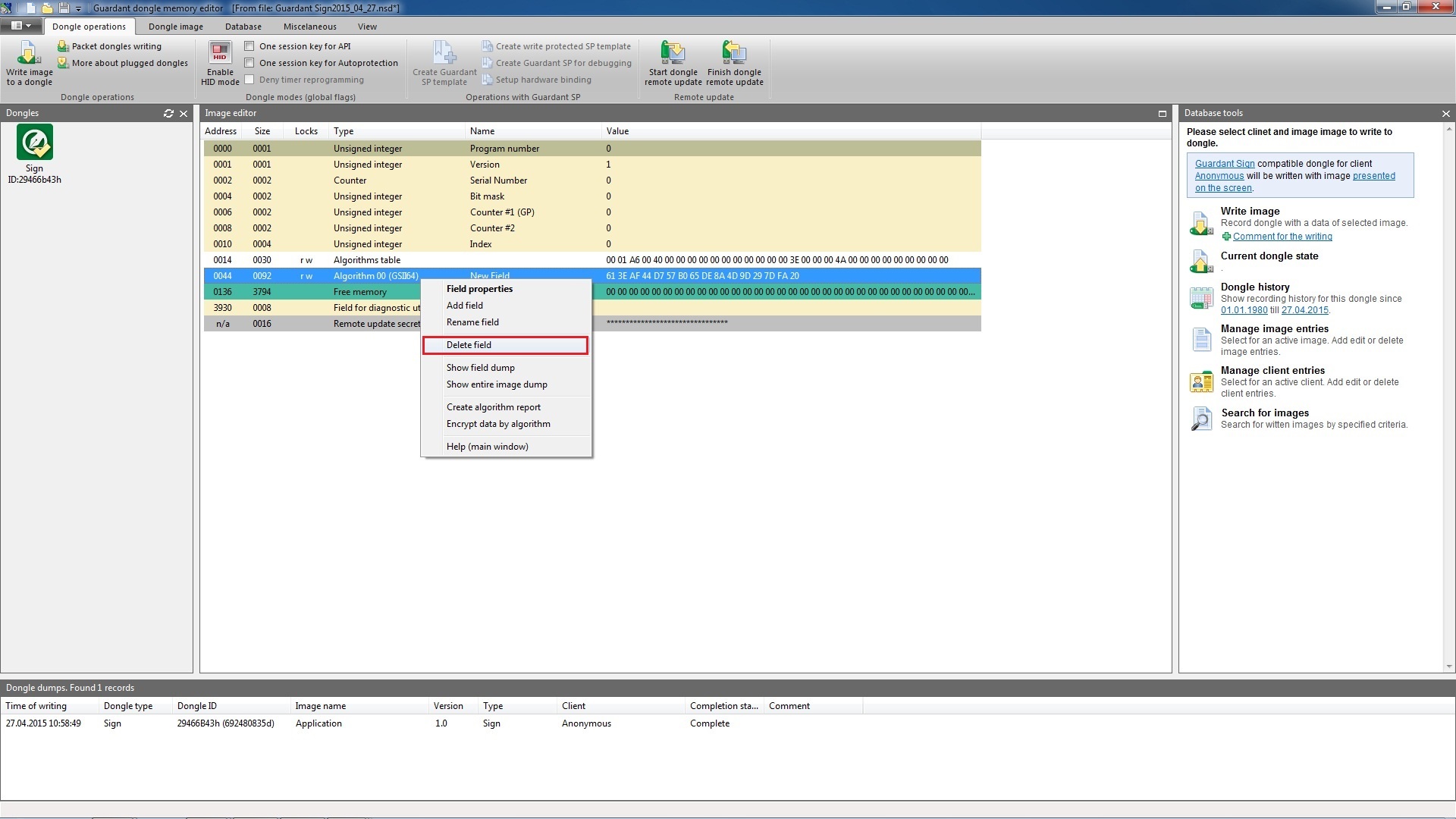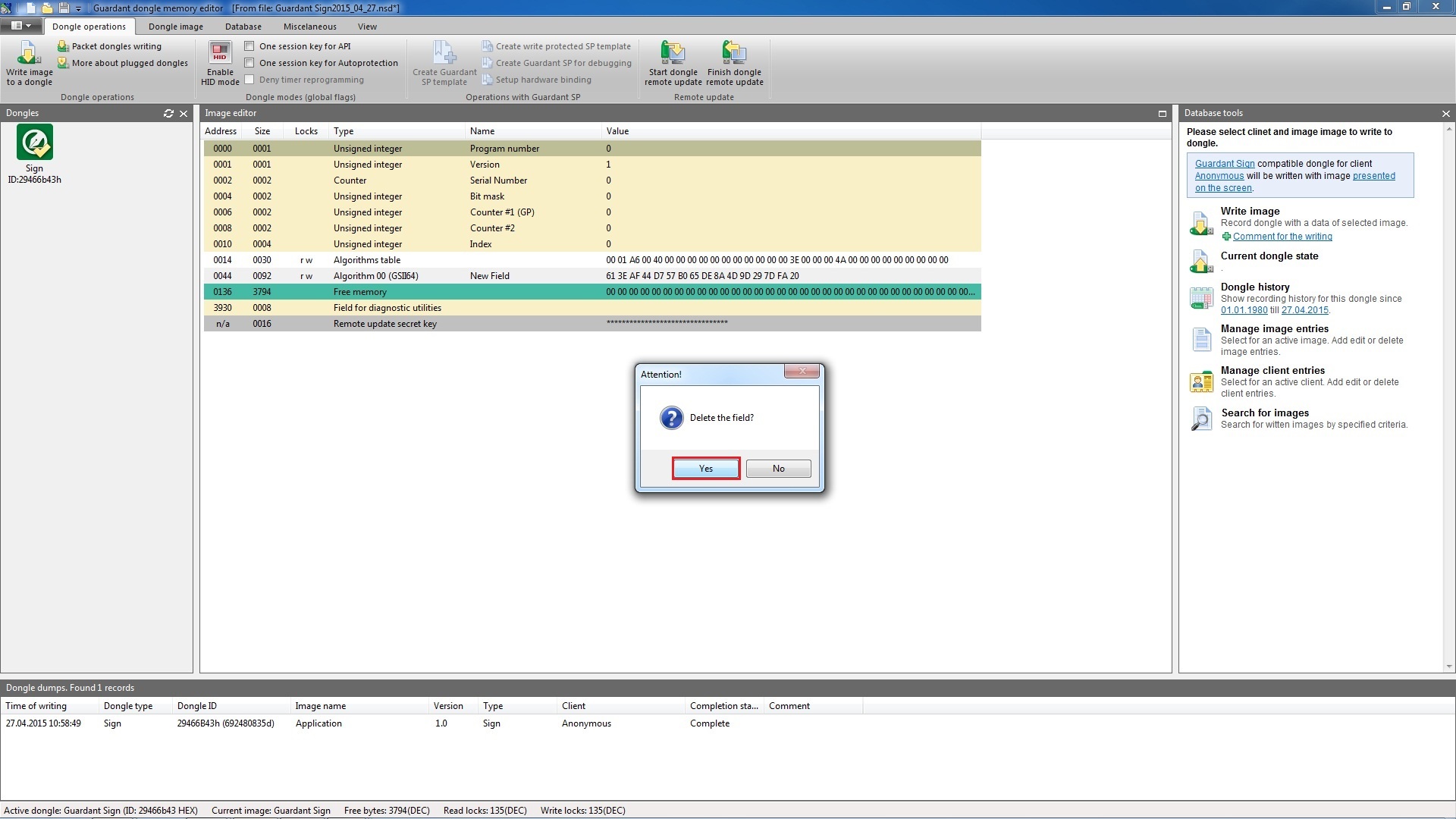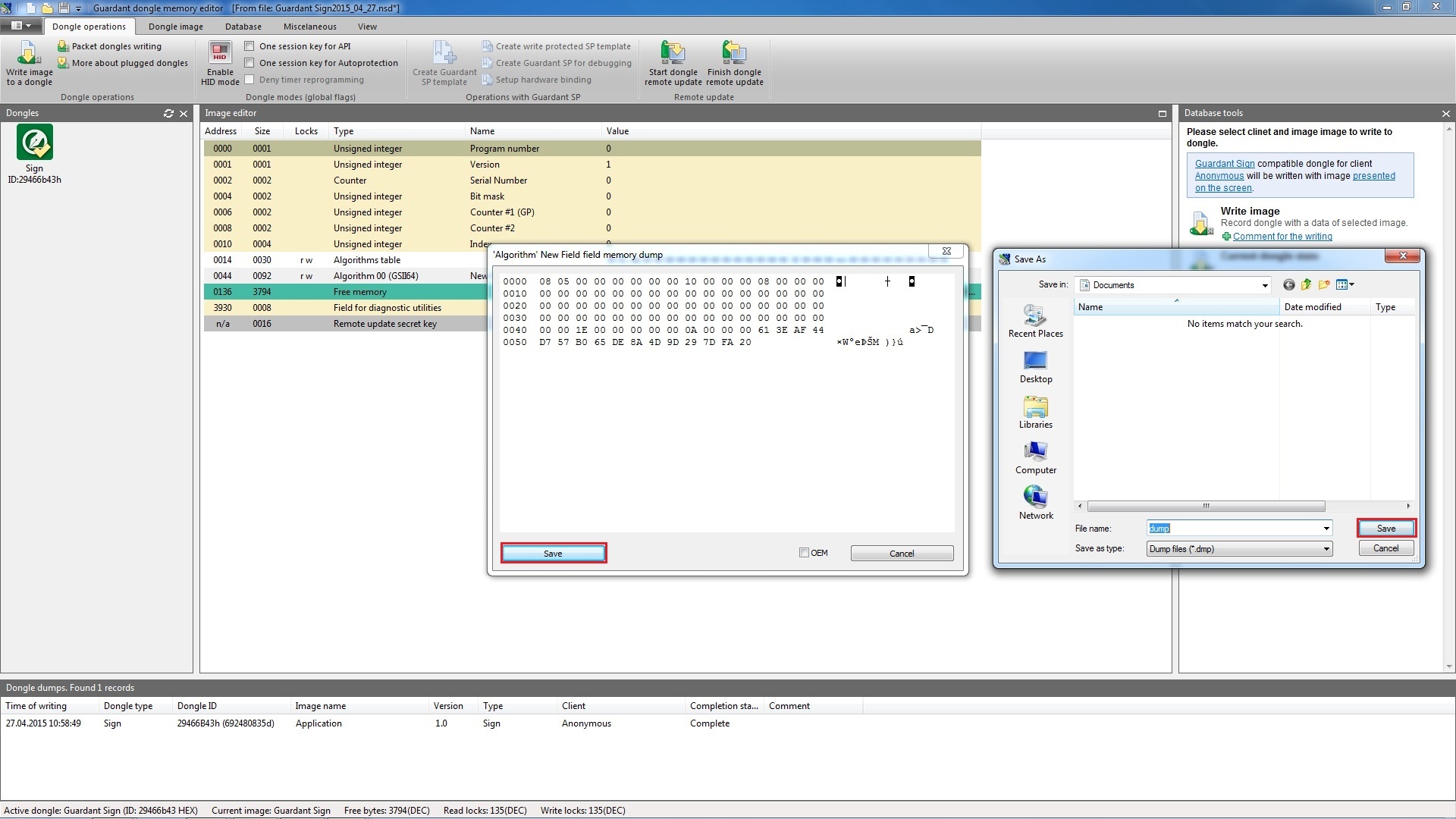This memory area can be used for storing any data required for application protection, including: hardware algorithm descriptors, license tables, key words, data sets, constants, code blocks, etc.
You can create fields of various types, edit their contents and delete them.
Important information
All models of available modern Guardant dongles contain several default hardware algo-rithm descriptors and protected items.
From within an application data stored in the area of free purpose fields is accessed using the Guardant API functions.
Types and main properties of free purpose fields:
| Field type | Size, bytes | Contents | Hardware locks | Working with field from within the application (Guardant API) | |
|---|---|---|---|---|---|
| Algorithm | Field size is defined by the size of algorithm descriptor | Hardware algorithm descriptor | Mandatory read/write locks |
| |
| Protected item | Arbitrary size into the modern dongles; 1 – 255 + service fields into the old models | Protected item descriptor | Mandatory read/write locks | GrdPI_Activate, GrdPI_Deactivate, GrdPI_Read, GrdPI_Update | |
| License table | Guardant Sign Net/ Time Net/ Net III | 1 or 2 per ele-ment+ service fields (not more than 254 bytes) |
| Mandatory read/write locks | GrdPI_Activate, GrdPI_Deactivate, GrdPI_Read, GrdPI_Update |
| Guardant Net II / Net | 1 or 2 per element 127 modules maximum | Information on the software modules number and license limit of each module | Mandatory write locks | GrdRead | |
| Integer | 1, 2, 4, 8 | Integer or unsigned integer | Write locks (when necessary) | GrdRead, GrdWrite | |
| String | Random size | Character sequence in ANSI or Unicode encoding | Write locks (when necessary) | GrdRead, GrdWrite | |
| Counter | 1, 2, 4, 8 | Unsigned integer. Increments automatically on each operation of writing a mask into the dongle memory | Write locks (when necessary) | GrdRead, GrdWrite | |
| Dump | Random size | Binary dump | Write locks (when necessary) | GrdRead, GrdWrite | |


